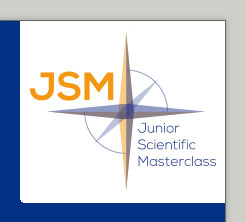Onderzoeksproject aanpassen
Projecten zijn uitsluitend aan te passen door bij het project behorende onderzoekers.
Geef via het uitrolmenu aan welke onderzoeker u bent. Nadat op u de button 'Edit project' heeft geklikt, wordt automatisch een e-mail verstuurd naar het e-mailadres van de onderzoeker die u heeft gespecificeerd.
In deze e-mail staat een link waarmee u het project kunt wijzigen.
Project properties
| Title | Unravel the imaging binding mechanism in cardiac amyloidosis. |
|---|---|
| Keywords | pathology medical imaging Cardiac Amyloidosis |
| Researchers |
dr. R.H.J.A. Slart H. van Goor |
| Nature of the research | Preclinical/ex-vivo research project. |
| Fields of study | pathology nuclear medicine cardiology |
| Research question / problem definition |
|---|
| Do tracers bind to amyloidosis in biopsied ex-vivo amyloidosis tissue? |
| Workplan |
|---|
| Five biopsied cardiac tissue samples and 15 biopsied subcutaneous samples will be evaluated on binding capacity of the most common used bone SPECT tracer. This will mainly be performed on the Pathology lab, under supervision of prof.dr. Harry van Goor. Delivery of the tracer, and qualification of incubated tissue with the bone tracer will be supervised by prof.dr. Riemer Slart. In this pilot study we will work first with an optical bone tracer variant. In subsequent studies the nuclear SPECT and PET tracers will also be applied for the ex-vivo tissue incubation projects. This short description can of course be explained in more detailed by the supervisors. |
| References |
|---|
|
1. 99mTc-aprotinin imaging in cardiac amyloidosis. Make an old tool new again? Time for new imaging and therapeutic approaches in cardiac amyloidosis. Slart RHJA, Glaudemans AWJM, Noordzij W, Bijzet J, Hazenberg BPC, Nienhuis HLA. Eur J Nucl Med Mol Imaging. 2019 Jul;46(7):1402-1406. 2. Diagnostic accuracy of bone scintigraphy in the assessment of cardiac transthyretin-related amyloidosis: a bivariate meta-analysis. Treglia G, Glaudemans AWJM, Bertagna F, Hazenberg BPC, Erba PA, Giubbini R, Ceriani L, Prior JO, Giovanella L, Slart RHJA. Eur J Nucl Med Mol Imaging. 2018 Oct;45(11):1945-1955. 3. ASNC/AHA/ASE/EANM/HFSA/ISA/SCMR/SNMMI expert consensus recommendations for multimodality imaging in cardiac amyloidosis: Part 1 of 2-evidence base and standardized methods of imaging. Dorbala S, Ando Y, Bokhari S, Dispenzieri A, Falk RH, Ferrari VA, Fontana M, Gheysens O, Gillmore JD, Glaudemans AWJM, Hanna MA, Hazenberg BPC, Kristen AV, Kwong RY, Maurer MS, Merlini G, Miller EJ, Moon JC, Murthy VL, Quarta CC, Rapezzi C, Ruberg FL, Shah SJ, Slart RHJA, Verberne HJ, Bourque JM. J Nucl Cardiol. 2019 Dec;26(6):2065-2123. 4. 18F-sodium fluoride positron emission tomography assessed microcalcifications in culprit and non-culprit human carotid plaques. Hop H, de Boer SA, Reijrink M, Kamphuisen PW, de Borst MH, Pol RA, Zeebregts CJ, Hillebrands JL, Slart RHJA, Boersma HH, Doorduin J, Mulder DJ. J Nucl Cardiol. 2019 Aug;26(4):1064-1075. |



